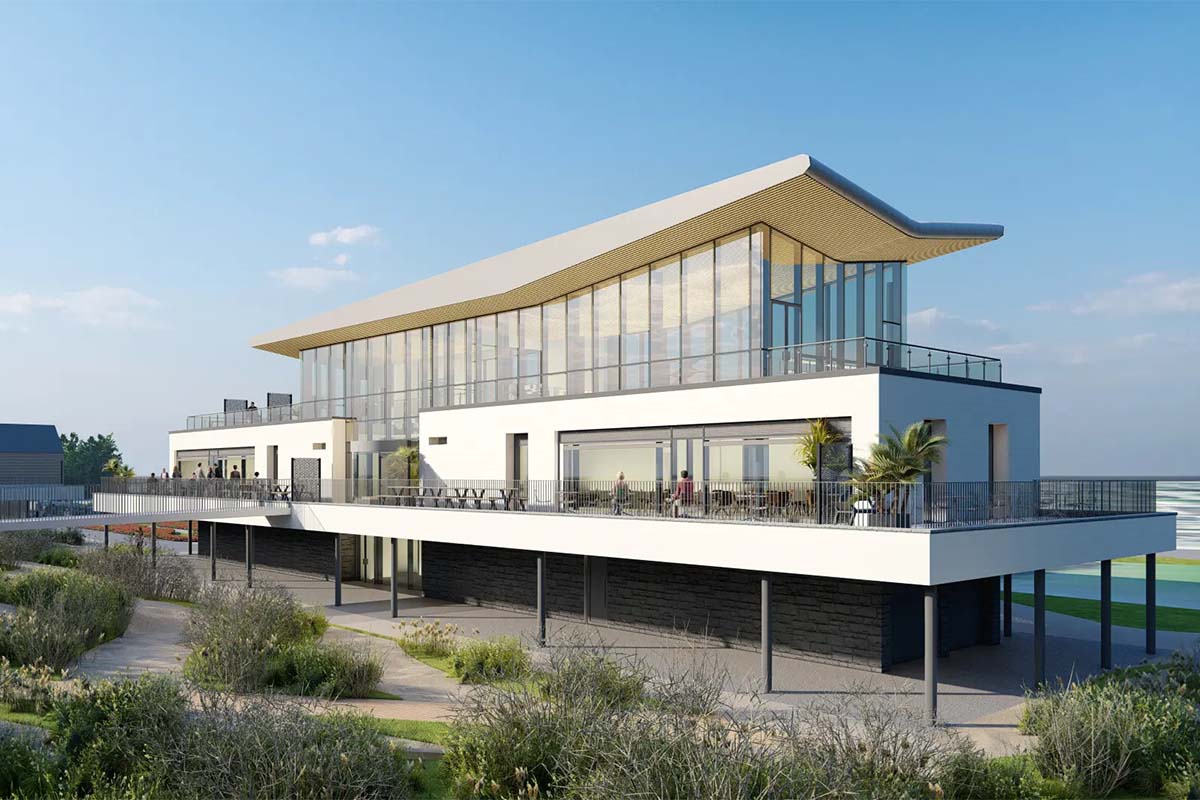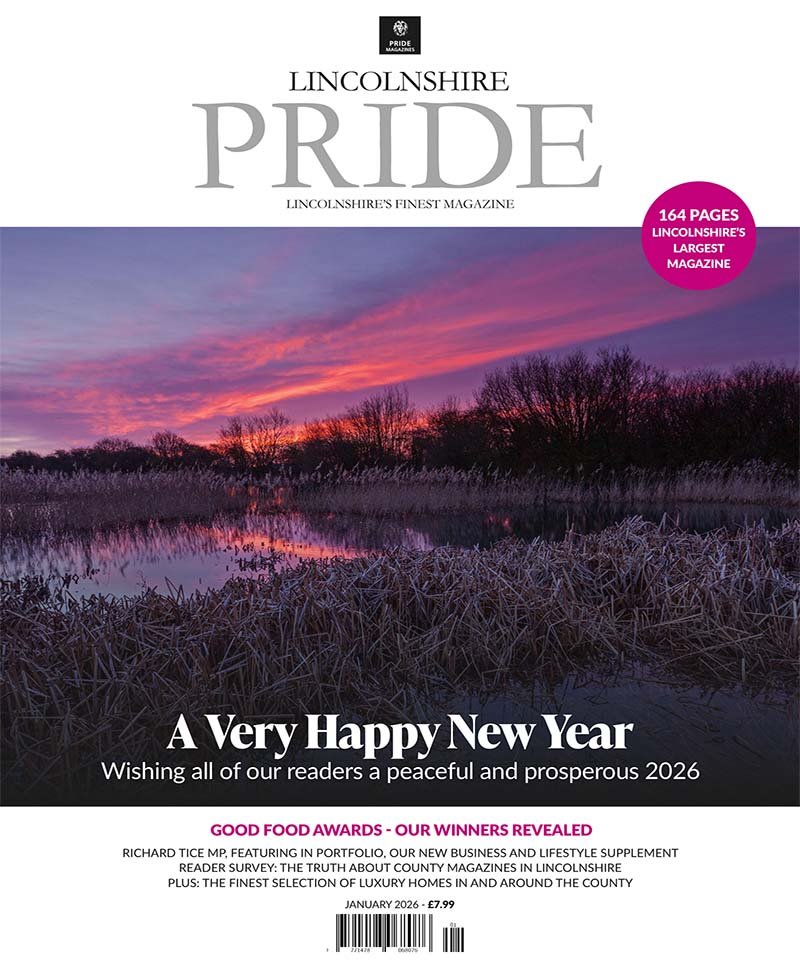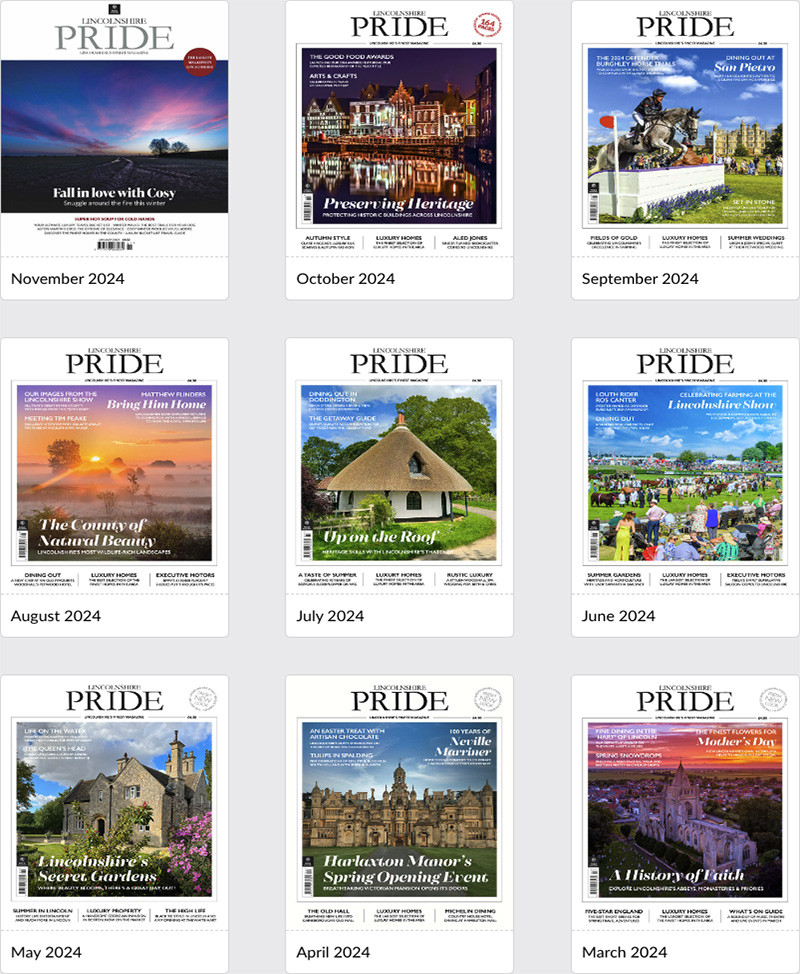
Skegness and The Lincolnshire Coast
Lincolnshire’s East Coast is over 50 miles in length and the modern iteration of the coastline dates back from the 1870s. Resorts like Skegness have enjoyed a transformation from fishing village to a destination for holidaymakers. Today, Skegness still attracts over four million tourists each year, and thanks to an ongoing commitment and fresh investment, redevelopment and regeneration is taking place all along the East Coast
In 1873, something transformative happened to the village of Skegness. The railway arrived in the town and redefined the town’s very nature, changing it from a small fishing village to a coastal town that would continue to welcome holidaymakers into the 21st century.
Today, something similar is happening, with Connected Coast, which is overseeing a multi-million pound investment in the area, determined to ensure that the Lincolnshire Coast remains relevant for decades to come.
“The new learning campus will bring with it a broad curriculum and new opportunities for the community of Skegness,” says Ann Hardy, CEO of TEC Partnership.”
The new campus is set to make a huge impact in the community, offering further and higher education tailored towards vocational skills training to meet local needs. Fourteen million has been invested in its creation out of a total £24.5m that the last government’s Towns Fund grant awarded to the town.
Connected Coast has now also facilitated the redevelopment of part of the foreshore by The Burney Group, plus a new multi-user path between Skegness and Ingoldmells as well as a new Police Training Academy and improvements to the town’s railway station. In addition, High Street improvements, with new urban furniture and modernisation of tired looking shop fronts, will help to ensure holidaymakers and Lincolnshire residents can all recognise Skegness as a seaside resort still relevant over 150 years on.
Skegness was not, in fact, mentioned in the Domesday book, despite the fact that it had existed during the Iron-Age and Roman eras, when a saltmaking operation was a good source of income for the settlement.
What we now know to be Skegness though was once referred to as Tric and was a settlement in the hundred of Candleshoe with five households circa 1086. Addlethorpe was actually the more populous area of Candleshoe at the time with over 100 households.
The name Skegness began to be used in the 12th century. The area was a fishing village and coastal harbour whose fortunes were closely linked to much larger ports like Boston and Grimsby.
It’s believed that Skegness was actually in a different location a couple of miles away, but due to coastal erosion, rising sea levels and the village being washed away in a storm in 1525, the whole settlement was relocated slightly to its current position. The 9th Earl of Scarborough, Richard Lumley, engaged James Whitton to design and build a holiday resort at Skegness and work began in the 1870s, with new promenades, pleasure gardens and pier (1881), plus bathing pools (1883) and the main shopping street (Castleton Boulevard and Burgh Road). Lumley also brought other infrastructure to the town, from its sewage system to its gasworks, waterworks and sea defences. In addition, 787 properties were also built, across 96 acres.
The railway, though, was the development’s raison d’être, allowing 20,000 visitors to come to Skegness each year, ensuring tourism could replace declining local agricultural and ensure Skegness’s continuing economic prosperity.
Next came John Hassell’s Jolly Fisherman railway poster in 1908 and the development of Butlin’s in 1936. A town with a population of just 400 in 1873 was home to over 2,000 by 1900, with a huge influx of seasonal visitors too.
Today the town has around 22,000 residents, but attracts over 4,000,000 visitors each year, making it the fourth busiest resort in England and helping to ensure East Lindsey’s visitor economy is now worth over £824m.
The Connected Coast Board is chaired by Chris Baron, and its membership includes public and private board members. MPs and council leaders as well as organisations such as the Environment Agency, the National Trust, Heritage Lincolnshire and Magna Vitae are represented on the board.
The group is keen is to maximise the great potential of Skegness so that it can thrive, similar to the transformative era of prosperity which the Earl of Scarborough envisaged back in the 19th century.
Mablethorpe
Mablethorpe is steeped in traditional charm. Historically a fishing village, it evolved as a coastal resort from the late 19th century with the arrival of the railway. Mablethorpe is today home to around 12,000 residents, with the population swelling during summer due to its popularity with holidaymakers.
Recent regeneration efforts, led mainly by East Lindsey District Council and supported by Town Deal funding, have seen the construction of the Station Leisure and Learning Centre and a Campus for Future Living developed. Other investment aims to revitalise the High Street, enhance public spaces, and improve connectivity to the coast.
Ingoldmells
Located just a few miles north of Skegness, Ingoldmells is a vibrant and energetic holiday spot best known for its vast caravan parks and family entertainment.
Its transformation began in earnest during the 20th century with the rise of domestic tourism. Home to Fantasy Island (celebrating its 30th anniversary this year), one of the UK’s largest amusement parks in the area, the town is a magnet for thrill-seekers and bargain hunters alike, thanks to the popular market on-site. It was also a centre for dance music during the mid to late 1990s.
Though its permanent population is modest — around 2,000 — the town accommodates tens of thousands in peak season. Continued investment in amenities is helping to bolster its profile as a popular East Coast resort.
Sutton on Sea
More genteel than its livelier neighbours, Sutton on Sea offers a slower pace, ideal for those in search of peaceful coastal charm. With roots dating back to Roman times, it developed into a seaside resort during the Edwardian era, evidenced by its elegant promenades and beach chalets, currently being repainted by local artists including Deb Crummey (below) in cheerful new shades.
The population hovers around 4,500, skewing slightly to an older population due to its popularity with retirees. Sutton on Sea is benefitting from Towns Fund investment which has supported the construction of Seaview Colonnade, led by East Lindsey District Council, which will offer more for residents and visitors to enjoy. Its appeal lies in its relaxed atmosphere, immaculately kept beach, and traditional seaside values.
Chapel St Leonards
Nestled between Ingoldmells and Sutton on Sea, Chapel St Leonards is a compact resort town with a friendly, village-like feel. It has long served as a haven for holidaymakers, especially those seeking a quieter stay.
The town’s economy is closely tied to tourism, with numerous holiday parks, pubs, and cafés. Approximately 3,000 people live here year-round, and recent community-focused initiatives have encouraged local events and arts-based projects to bolster its identity. The beach remains its main draw, with unspoiled sands, colourful beach huts, and striking views over the North Sea.
The Embassy Centre
What better way to celebrate the 100th anniversary of the Embassy Ballroom than with the completion of a £4.5m refurbishment to transform the building into a new ‘culture house’ for performing arts and live entertainment?
Originally the Embassy Ballroom, opening in 1926, it featured a street-level dance hall with a restaurant below and was initially known as the Piazza. Notable entertainers such as George Formby, Danny La Rue, and Eartha Kitt. In 1978, the original structure was severely damaged by a storm, leading to a significant refurbishment in 1982 when it was pretty much rebuilt and became the Embassy Centre.
Work on the current project began in September 2024 and was completed in late April, when the centre hosted That’ll Be The Day.
Skegness Pier
If there was an award for the unluckiest pier in Britain, we’re afraid Skegness Pier would be a contender. It had a bright start though, in 1877 when the Earl of Scarborough – who had brought the railway to Skegness, boosting its tourism appeal – formed the Skegness Pier Company and chose a design from Clarke & Pitwell out of 44 submitted designs as his preferred option.
The architects were Head, Wright and Son and work began in 1880. The pier was 1,817ft long and cost £20,840 (£2.1m in today’s money). It opened on 4th June 1881 with a 700-seat saloon, a concert hall and steamboat trips for visitors.
Disaster struck in March 1919 though, when the schooner Europa crashed into the pier, which would not be repaired until 1939. Then the 1953 floods again damaged the pier head, and a storm would wash away much of the pier in 1978, before a fire during repairs in October 1985 further gutted the structure.
Historically, many improvements have been attempted from a new 1,200 seat theatre and monorail in the 1970s to a canopy which would link the pier with Bottons Pleasure Beach and a sea taxi, both proposed in 2013 but subsequently abandoned when European Regional Development Funding was pulled.
Happily, recent years have been rather kinder to the pier with a full redevelopment resulting in a reopening in 1991, and a redecking and refurbishment in 2005/2006. More recently the Mellors family, purchased Ingoldmells’ Fantasy Island in 2016 then purchased the pier from the Mitchell family for £3m in 2021. The Mellors Group has invested substantially in improving the 10,000 sq ft of entertainment space that the pier, now 118 metres in length, provides. July 2023 saw the Mellors Group submit plans for a multi-million pound redevelopment which would include new beach huts and a multi-use amphitheatre.
Cleethorpes Pier
With plans approved in November 1866 and construction taking place from 1867 to 1973, Cleethorpes Pier predates Skegness Pier. It was financed by Manchester Sheffield and Lincolnshire Railway (later LNER) and cost £8,000 (£750,000). It was 1,200ft long and had a pavilion as well as an adjacent pier gardens site. Sadly the pier was breached in 1940 and rebuilt with a more modern pavilion in 1986.
Numerous owners have come and gone since until the pier was purchased by the Huxford family, who invested £4.7m and two years in its restoration in 2015, only to sell it the following year after it was awarded the title Pier of the Year. That year it was transformed into ‘the world’s biggest fish and chip restaurant,’ with a capacity of 500 people and with George Papadamou helping to put the pier in the 2019 top 10 restaurants award in the National Fish & Chip Awards. August 2022 saw the pier celebrating its 150th anniversary.
Developments on the East Coast
This month sees the greatly-anticipated completion of construction for Sutton on Sea’s new Colonnade. In 2021 the government’s Towns Fund awarded the area £24.5m to regenerate the Lincolnshire Coast and support its long-term economic growth.
Joined Up Thinking: The Seaview Colonnade has been led by East Lindsey District Council with Towns Fund investment. Projects arising from the investment were to target Skegness and Mablethorpe. In Skegness, improvements to the Foreshore, a new railway interchange, a new Skegness TEC learning campus plus improvements to the Grade II listed Tower Gardens (completed in June 2024) and a refurbishment of the Embassy Theatre were all projects that resulted from the investment.
New Areas for Nature: Connected Coast is also working with a number of external partnerships from delivery partners like the National Trust, which is working on a redevelopment of Sandilands as a new coastal country park.
Sandilands covers 30 hectares and has been created with the Lincolnshire Wildlife Trust, the Environment Agency, Lincolnshire County Council and East Lindsey District Council to provide a habitat for migratory birds and other wildlife.
A huge native shrub planting project in spring saw over 100 volunteers planting more than 6,500 scrub plants, from hawthorn, sea buckthorn and blackthorn whilst seating areas and boardwalks will ensure the site can be enjoyed by as many people as possible without compromising the natural habitat. The site is due to be complete by 2026.
Meanwhile, Lincolnshire County Council has helped to establish the King Charles III England Coastal Path which stretches from Hunstanton to Skegness and eventually reaches the Humber.
When completed the Coastal Path will be 2,700 miles long, connecting British coastal towns and places with notable heritage or historic links.
In addition a Multi-User Trail is a one-mile path between Chapel St Leonards and Ingoldmells which interconnects to other footpaths to create a four-mile route. Supported by Towns Fund investment and created by Hardy’s Farm, the route is ideal for walkers and cyclists and opened in 2023.
The Seaview Colonnade: The East Coast will also benefit from the opening of the Seaview Colonnade and Pleasure Gardens in Sutton on Sea, construction of which began in September 2023 and at a cost of £7.5m. Residents and visitors to the new Colonnade will enjoy a state-of-the-art pavilion, including a café and restaurant, and an exhibition space.
New beach huts will also be included as part of this phase of the works, as well as improvements to the Pleasure Gardens to create further seating areas and a space for pop-up events and markets.
There will also be planting and community gardens and a new dunes landscape whilst retaining popular existing features, including the anchor water feature and paddling pool areas.
The North Sea Observatory: The Seaview Colonnade is the first major new construction on the East Coast since the North Sea Observatory which opened in 2018. It is located at Chapel Point in the seaside village of Chapel St. Leonards, with an exhibition and art space alongside a café with views over the sea.
Further Afield: Slightly further away from the East Coat, East Lindsey District Council is also working with partners to restore Alford Manor House, built in 1611, with a new event space, and Spilsby’s Sessions House, which was awarded £4.9m to develop a new café, bar, theatre and meeting space.
For more about Skegness and the East Coast and historic images of the Pier, see our July edition online now at https://issuu.com/pridemagazines/docs/lincolnshire_pride_july_2025






